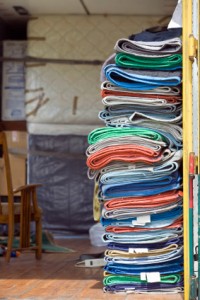My client, Barbara (not her real name) is kind, generous and very, very busy.
Her calendar is packed full of appointments, events and meetings. Her cell phone rings, buzzes and beeps almost constantly with notifications that go unanswered. Her unopened emails go on for pages. Her enormous home is tidy, beautifully decorated and as warm as she is but every inch of her storage – closets, cabinets, cupboards, drawers – are packed full. There isn’t an inch to spare.
Barbara is like the juggler who can keep ten plates spinning simultaneously at the top of ten poles without dropping them because each of them are equally important.
But when you treat everything in your life as equally important, spinning those 10 plates for days, weeks, months or even years (not just minutes) because you believe or behave as if everything is equally important, eventually one of two things happen. One or more of the plates break or you do.
It can be a quick break or a slow one but even the juggler knows when it’s time to stop.
When Barbara said to me recently that she’d turned down a number of invitations because she realized they weren’t worth her time, I felt a sense of relief for her because she was discovering that saying no meant she was finally saying yes… to herself. I also knew she had finally started to see the cost of making everything in her life equally important.
For every task, project, meeting, coffee date, or invitation you receive, before you do it, take it on or schedule it, before you say yes, ask yourself these 3 questions:
1) Is it important to me?
Is this your priority or someone else’s? Say yes to you before you say yes to someone else. If you are the kind of person that likes to be helping others but find yourself doing so at your own expense, it’s okay to say, “thank you for thinking of me but I just don’t have the time right now.”
2) If I don’t do this will it cost me?
What would happen if you didn’t do it? If you’re not sure whether to take something on, imagine not doing it. You don’t want to end up spending a little effort on lot of things instead of a lot of effort on what’s truly important.
3) Is it worth my time?
Only you can answer this question. If it saves you from stress and doesn’t cost you something to say no, then say no. You’ll only be saying yes to what’s really worth your time.
The bottom line is don’t hold on to stuff, projects, even old beliefs about yourself when they are no longer useful to you. Be willing to be brave. Be willing to make hard choices for the bigger rewards. Make room in your life for what matters most!










